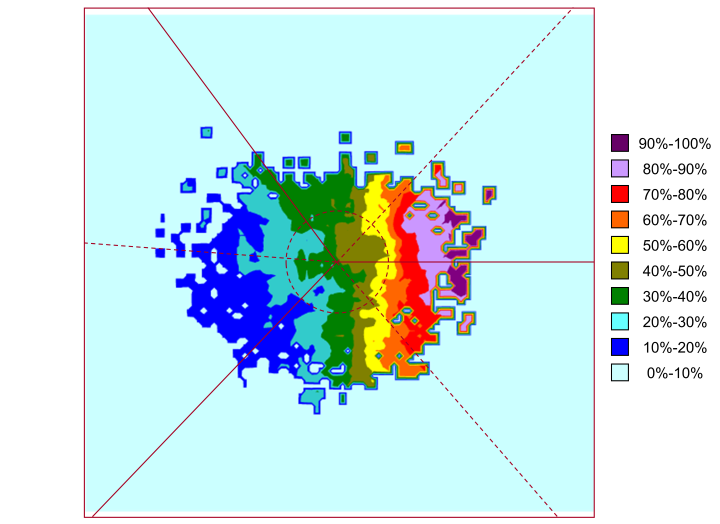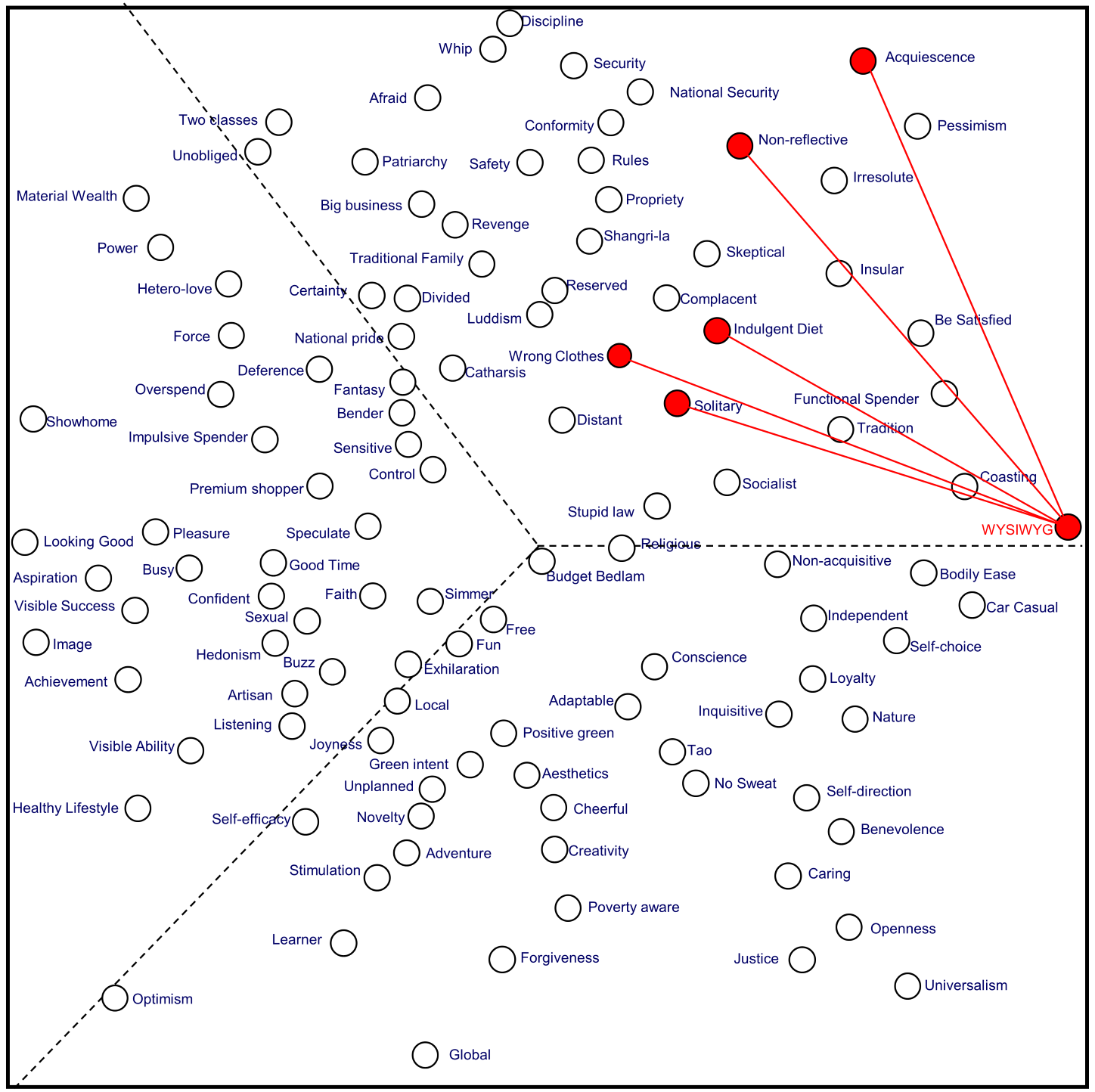

WYSIWYG
 |
I don't really care how I look. Clothes are just something I put on quickly and efficiently before getting on with things that are more important.
"What you see is what you get!" (WYSIWYG) is the core guiding principle for individuals who value this attribute. They do not care how they look, seeing clothes in purely functional terms, because they see other parts of life as more important. They see time spent on fashion and buying clothes as a waste of time.
There are two distinct groups of people who espouse this attribute - very different from all other attributes. The highly indexed attributes in the above frame describe the traditional version of WYSIWYG. But analysts need to understand there is another version - very similar in behaviour but having different motivations. Here we will give a short description of both.
Both groups reject the idea of being a clothes horse or being a walking advertisement for particular fashion brands; they do not care what others think of what they wear. Both sub-groups do not tend to lead a healthy lifestyle - which has implications to their body shape and clothes choices.
The first, more traditional group has little interest in getting to know themselves (or others), so may not learned what kind of clothes suit their personality and lifestyle. This breeds a sense of disappointment, as others often react to their 'situation or body inappropriate' clothing. This group of espousers cannot be bothered to think about issues like healthy eating, particularly if it involves calorie counting and reading the information on food packaging. Their self and other perceived body shape, as a result, may not easily fit into clothing that is more mainstream, i.e. 'acceptable' to others.
There is significant correlation with people who can be somewhat solitary or reclusive, either by choice or through the consequences of their inability or unwillingness to buy into the dominant social narrative or social ladder game. They are not necessarily anti-social, they are just not interesting in being part of the crowd in a literal sense or in the sense of following the latest trends adopted by the majority.
This group does not have much hope in life. Nothing excites them. In fact, getting excited could be rather challenging, because it would mean that they are on the edge of their comfort zone and would be fearful to change their daily routine. These espousers is not interested in reflection or figuring out who they are, they want to be free from the pressure to behave in a particular way.
The second, more modern/post modern group may have similar end behaviours - dressing in a manner that doesn't care what others think. They like to eat and drink whatever they like, depending upon their current beliefs and mood. They reject the 'game as it is played' and try to play by their own rules.
These espousers are keen to have a public image that demonstrates they have little interest in having a public image! By consciously rejecting the image conscious values and lifestyle, they become conspicuous by not fitting in and not trying to play the rat race game! In the past, influential celebrities and thinkers have worn casual clothes and have influenced the fashion market. Torn jeans and smart casuals are very much part of the image-conscious fashion world. By consciously trying not to make a statement through the clothes they wear, such people make a clear anti-statement that is later adopted by the conspicuous fashion seekers!
To summarise, in practice, the behaviours may be similar, but the motivations and the feelings are different. This attribute draws together individuals who resist social change and those individuals who try to introduce better change.
Using WYSIWYGDemographic Skews: 1) Over-indexed: Male. 2) Under-indexed: Female. WYSIWYG espousers also espouse other Attributes. The top five most highly correlated Attributes of WYSIWYG espousers are, in order of the strength of relationship: 1) Indulgent diet In total those who espouse WYSIWYG also over-index significantly on 27 other Attributes. |
|
If "WYSIWYG" (or the associated attributes) are important to you and you would like to delve more deeply, contact us at mail@cultdyn.co.uk
